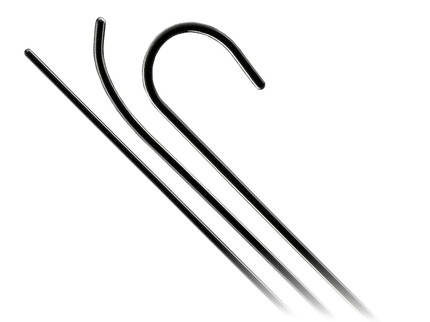Peripheral vascular sheath guidewires are indispensable instruments for interventional procedures, allowing healthcare providers to navigate intricate vascular pathways with essential support and precision. These guidewires facilitate maneuvering through narrow and tortuous blood vessels in peripheral areas such as the arms and legs. The Demax Peripheral Vascular Guidewire, currently in development, is engineered to enhance flexibility, steerability, and maneuverability, ensuring exacting navigation. These advanced guidewires are pivotal in accessing challenging parts of the vascular system, thereby supporting effective treatments and enhancing patient outcomes.

Anatomy and Functionality of Peripheral Vascular Sheath Guidewires
Explanation of the Components of a Guidewire
A key feature of the Demax Peripheral Vascular Guidewire is its hydrophilic coating, designed to enhance lubricity and reduce friction during advancement through blood vessels. This coating facilitates smooth navigation and minimizes the risk of vascular trauma. Additionally, the guidewire’s tip is engineered with radiopaque material, ensuring excellent visibility under fluoroscopy for accurate positioning within the vascular anatomy. These components work together to ensure precise and safe navigation through the peripheral vascular system.
Types of Guidewires Based on Materials and Designs
Guidewires come in various materials and designs to suit different clinical needs. Common materials include stainless steel and nitinol, each offering distinct benefits such as strength and flexibility. Stainless steel guidewires provide robust support and are less prone to kinking, while nitinol guidewires are known for their exceptional flexibility and shape memory. Design variations, such as tapered tips and varying levels of stiffness, allow clinicians to select the most appropriate guidewire for specific vascular challenges, optimizing procedural success.
How Guidewires Aid in Crossing Lesions and Navigating Tortuous Vessels
Guidewires play a crucial role in crossing lesions and navigating tortuous vessels. Their flexible design and precise control enable them to traverse complex vascular pathways, including stenotic or occluded segments. By providing a stable track, guidewires facilitate the delivery of catheters, balloons, and other interventional devices to the target site. This capability is essential for effective treatment of conditions such as peripheral artery disease (PAD), where navigating through narrowed or blocked arteries is critical for successful intervention.
Applications in Interventional Procedures
Angiography
Guidewires assist in guiding catheter placement for imaging the peripheral vascular system, aiding in diagnosing vascular conditions such as arterial blockages or aneurysms. By providing a stable pathway, they enable the precise positioning of diagnostic catheters, ensuring high-quality imaging and accurate assessment of vascular health.
Angioplasty
During angioplasty, guidewires navigate through narrowed or obstructed blood vessels to facilitate balloon dilation and improve blood flow. This process is essential for treating conditions like peripheral artery disease (PAD), where restoring adequate circulation to the extremities is vital for patient health and mobility.
Stenting
Guidewires play a pivotal role in guiding the placement of vascular stents to reinforce narrowed arteries. By ensuring the accurate deployment of stents, they help restore blood flow and prevent re-narrowing (restenosis) after angioplasty. This application is critical in maintaining long-term vascular patency and reducing the risk of future interventions.
Atherectomy
Guidewires support the delivery and positioning of atherectomy devices used to remove plaque buildup from arterial walls. By facilitating the precise removal of obstructions, they help restore vessel patency and improve circulation. This intervention is particularly beneficial for patients with severe atherosclerosis, where plaque removal is necessary for optimal blood flow.

Thrombectomy
In thrombectomy procedures, guidewires assist in retrieving blood clots (thrombi) from peripheral vessels. By restoring blood flow and preventing complications such as limb ischemia, they play a crucial role in emergency vascular interventions. Their precise navigation capabilities ensure effective clot removal and improve patient outcomes.
Embolization
Guidewires facilitate the precise placement of embolic agents to occlude abnormal blood vessels or control bleeding. This technique is often used in the treatment of vascular malformations or tumors, where targeted embolization is necessary to manage abnormal blood flow or reduce tumor vascularity. Guidewires ensure accurate delivery of embolic materials, enhancing procedural safety and efficacy.
Key Features
Diameter Options
The Demax Peripheral Vascular Guidewire offers a range of diameters from 0.014 inches to 0.038 inches, ensuring versatility to meet diverse procedural requirements. This selection allows healthcare providers to choose the most appropriate size based on specific vascular conditions and patient anatomies, ensuring optimal performance and successful interventions.
Customizable Lengths
Designed with customizable lengths ranging from 40 cm to 300 cm, the Demax guidewire accommodates variations in patient anatomy and procedural needs. This flexibility enables healthcare professionals to tailor the guidewire to the exact requirements of each intervention, enhancing its adaptability and effectiveness in navigating complex peripheral vascular systems.
High-Quality Materials
Crafted from high-quality stainless steel or nitinol alloy, the Demax guidewire combines exceptional strength, durability, and flexibility. Stainless steel provides robust support and resistance to kinking, while nitinol offers superior flexibility and shape memory, ensuring reliable performance in challenging vascular pathways.
Hydrophilic Coating
Equipped with a hydrophilic coating, the guidewire enhances lubricity and reduces friction during navigation through blood vessels. This feature minimizes the risk of vascular trauma and facilitates smooth advancement through narrow and tortuous vessels, thereby improving procedural efficiency and patient safety.
Radiopaque Tip
Featuring a radiopaque tip, the Demax guidewire offers excellent visibility under fluoroscopy, facilitating precise positioning within the vascular anatomy. This visibility is crucial for accurate navigation and placement of therapeutic devices, ensuring optimal treatment outcomes for patients.
Optimized Flexibility and Trackability
Engineered with optimized flexibility and trackability, the Demax guidewire provides precise control and support when navigating tortuous vascular pathways. This capability is essential for successfully crossing stenotic lesions and navigating complex anatomical structures, thereby enhancing procedural success rates.
Multifunctional Design
The guidewire’s multifunctional design supports various interventional procedures, including crossing stenotic lesions, delivering therapeutic devices, and retrieving embolic material. This versatility ensures comprehensive support for a wide range of vascular interventions, improving procedural efficiency and patient care outcomes.
Advanced Specifications
Backed by advanced specifications, the Demax guidewire delivers reliable and effective performance in peripheral vascular interventions. These features collectively enhance navigation, support, and delivery capabilities, contributing to improved procedural success rates and patient outcomes.
Safety Considerations and Best Practices
Guidelines for Selecting Appropriate Guidewires
Selecting the right guidewire based on patient anatomy and procedural complexity is critical for ensuring safety and efficacy. Healthcare providers should consider factors such as vessel size, lesion characteristics, and procedural goals when choosing a guidewire to optimize performance and minimize the risk of complications.
Safety Measures to Prevent Complications
Implementing safety measures is essential to prevent complications such as vessel perforation or dissection during vascular interventions. Healthcare professionals should employ proper technique, gentle manipulation, and continuous monitoring throughout the procedure to mitigate risks effectively. Utilizing guidewires with hydrophilic coatings and radiopaque tips further enhances safety by facilitating smooth navigation and accurate device positioning.
Importance of Proper Training and Skill Development
Proper training and skill development are crucial for mastering the use of guidewires in vascular procedures. Healthcare providers should undergo comprehensive training programs and engage in regular practice to refine their techniques and stay abreast of advancements in guidewire technology. This ongoing education ensures competence in navigating complex vascular pathways with confidence and precision, ultimately improving patient outcomes.
Future Trends and Innovations
Advances in Guidewire Technology
Ongoing advancements in guidewire technology, including nanotechnology integration and enhanced imaging capabilities, are poised to revolutionize peripheral vascular interventions. These innovations promise improved navigation accuracy, reduced complication rates, and enhanced therapeutic outcomes, making procedures safer and more effective for patients.
Potential Impact of Robotic-Assisted Guidewire Navigation Systems
The advent of robotic-assisted guidewire navigation systems holds significant potential for advancing vascular interventions. These systems offer superior precision, control, and reproducibility in navigating complex vascular pathways, leading to enhanced procedural efficiency and improved patient outcomes. The integration of robotics is expected to redefine procedural standards by minimizing human error and optimizing device placement during interventions.
Emerging Research and Clinical Trials
Ongoing research and clinical trials are exploring novel approaches to further enhance guidewire performance and patient outcomes. Innovations such as biodegradable guidewires, smart guidewires with real-time feedback mechanisms, and personalized guidewire designs are under investigation. These developments aim to enhance safety, efficacy, and patient comfort during vascular procedures, paving the way for future advancements and improvements in clinical practice.
CONCLUSION
Precise navigation of complex vascular pathways. These guidewires allow medical professionals to more easily and accurately navigate narrow and tortuous vessels in peripheral areas such as the arms and legs. The Demax peripheral vascular guidewires currently in development are specifically designed for increased flexibility, maneuverability, and maneuverability. Ensuring precise navigation through challenging vascular topography. Through new technology and innovative advancements, guidewires like the Demax models not only support effective treatment. But also have the potential to improve the safety, efficiency, and overall success rate of peripheral vascular interventions, thereby improving patient outcomes.